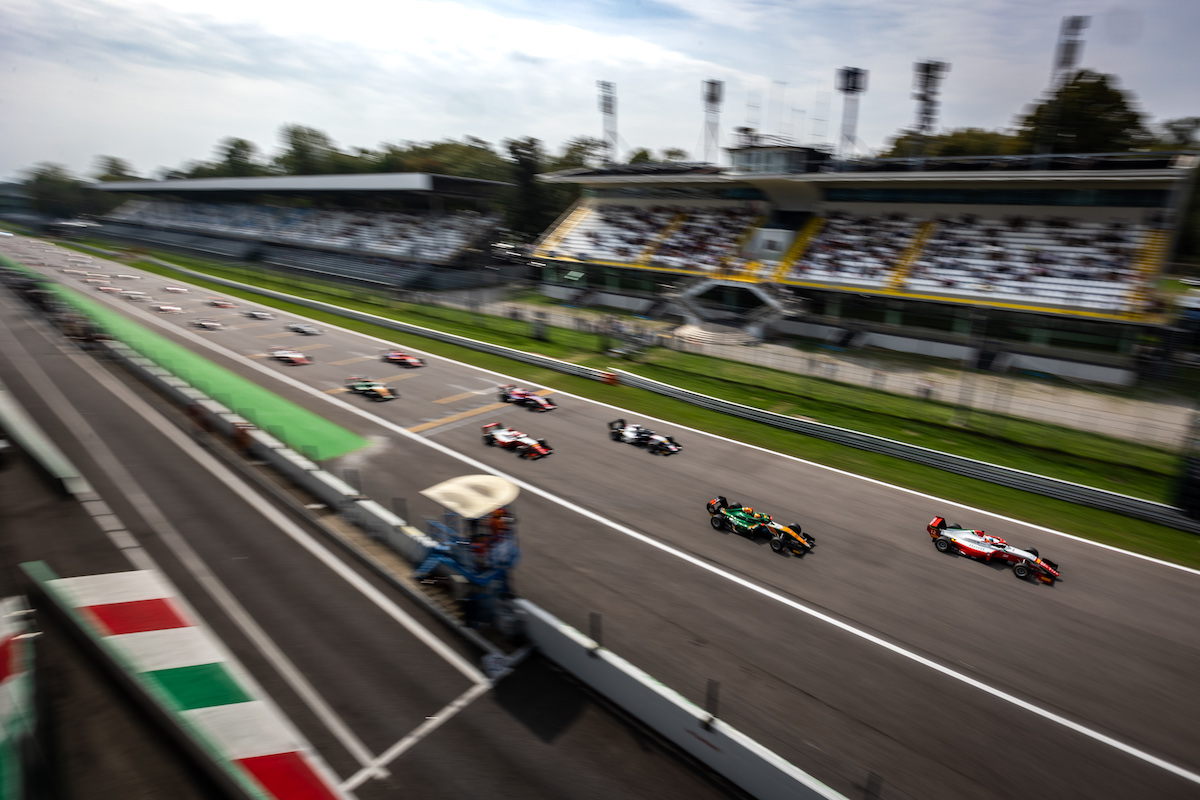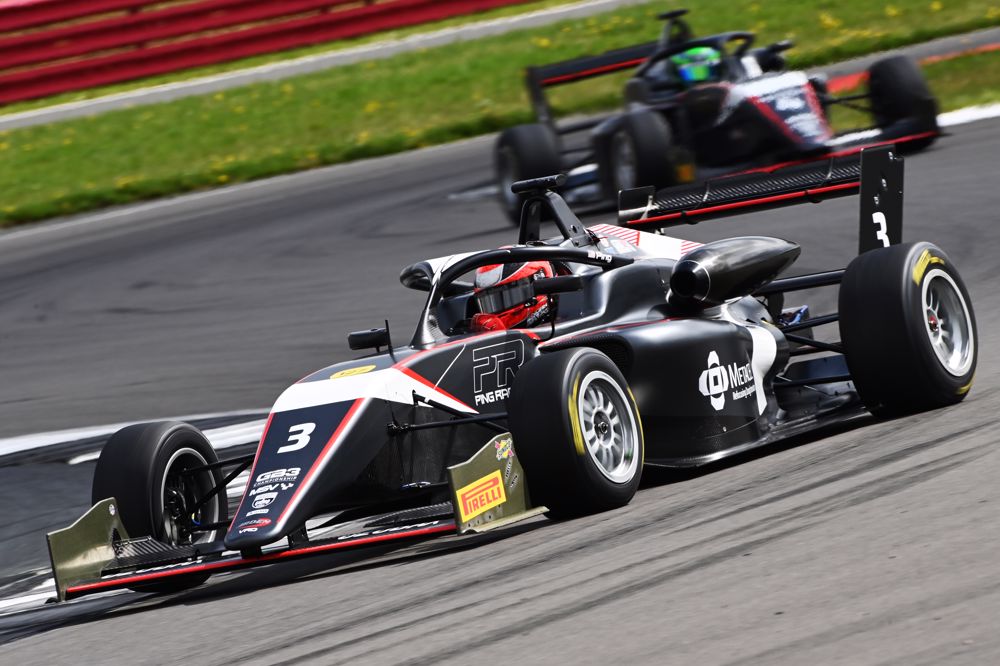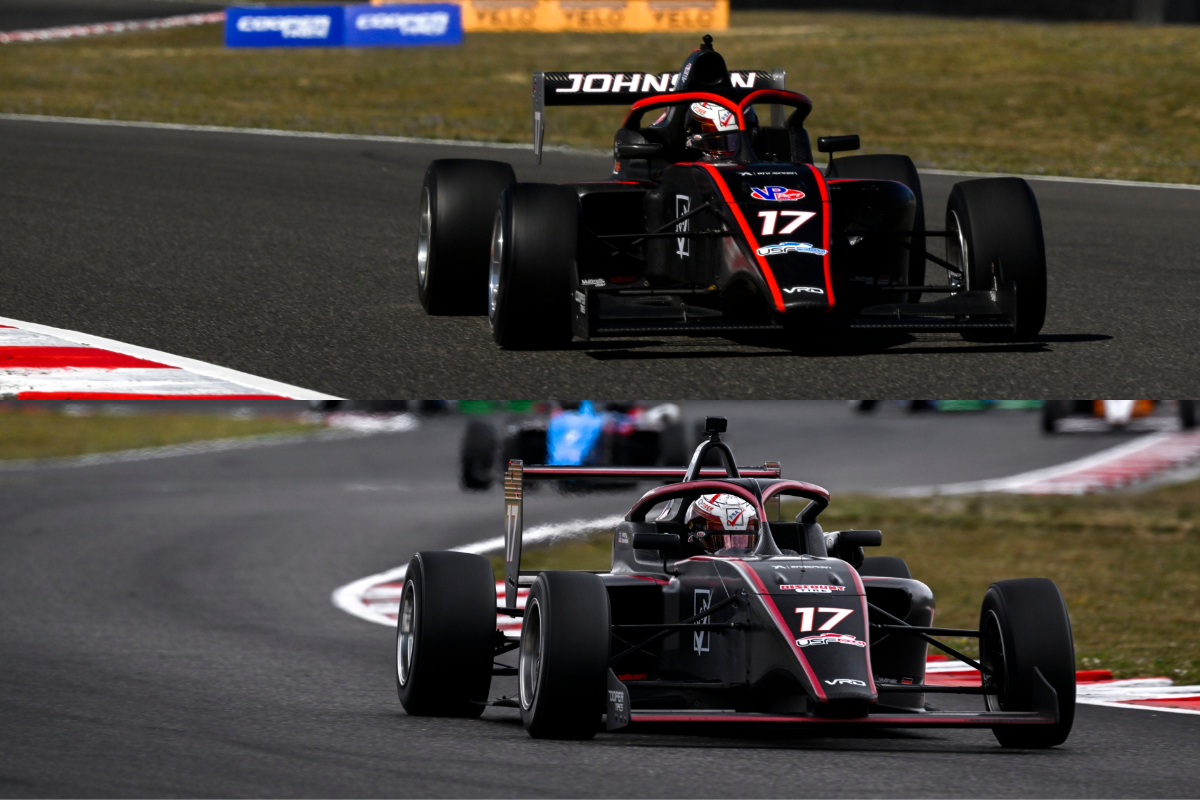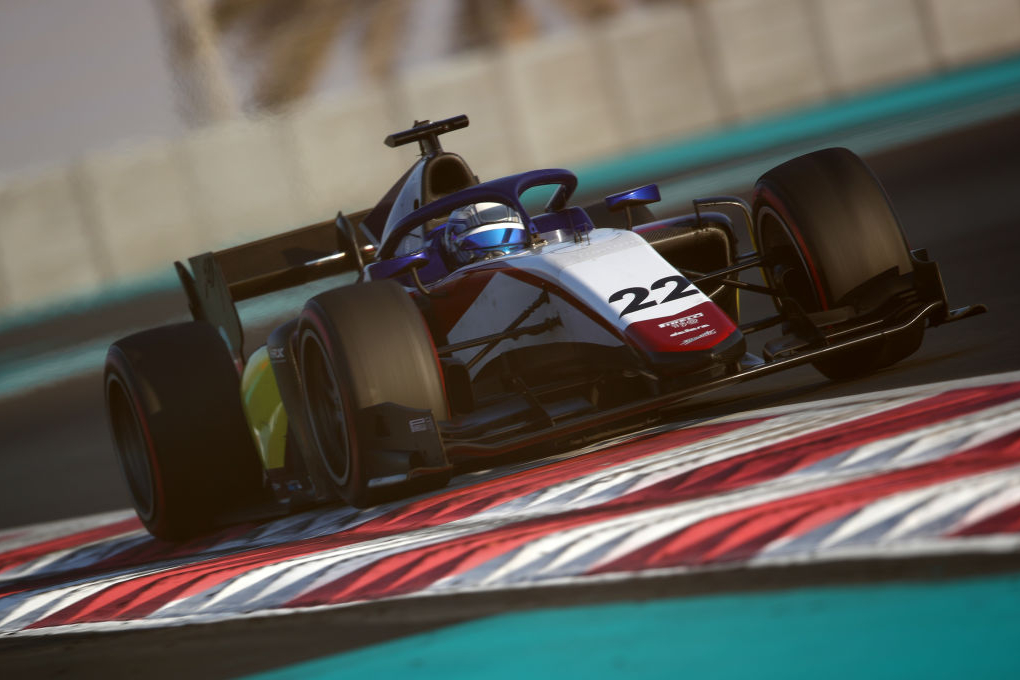
Photos: Gavin Baker Photography
In fewer than five years, VRD has built a name on both sides of the Atlantic in junior single-seater racing as it aims to develop American drivers for the top echelons of motorsport
Velocity Racing Development is a team with an ambitious plan to unearth talented American youngsters coming out of karting, often as young as 14, develop them in the USA’s junior single-seater series before bringing them over to the cut-and-thrust of European racing to hone their skills further, with the aim of progressing to Indycar or Formula 1.
And the team already has its sights set on Formula 3 and Formula 2. In fact, Formula Scout can reveal that the team came close to joining both grids for 2023 before a deal to take over Charouz Racing System’s entries fell apart at the last moment.
The man behind the rapid rise of VRD is an Englishman, Dan Mitchell, who explained his philosophy and his team’s plans to Formula Scout.
From its base at Atlanta Motorsports Park, VRD has expanded rapidly onto IndyCar’s support ladder, competing full-time in USF Juniors and USF2000 and getting a taste of the third-tier USF Pro 2000 series (once known as Pro Mazda) in 2023.
Over in England, in the last two years it has added a presence in GB3 and GB4 through its partnership with Arden.
“It’s been thick and fast, but I really haven’t surprised myself with it,” admits Mitchell. “We set a goal early to do what we’re going to do, and I think we’re achieving it pretty quickly.”
He’s convinced that the only viable road to F1 for a young American is through a grounding in the European-based junior single-seater pyramid rather than moving across from IndyCar or stepping up from its primary feeder series Indy Nxt.
“How do you develop as a driver without being in Europe?” he asks rhetorically.

Photo: Dutch Photo Agency
“I truly don’t believe without GB3, Formula Regional European Championship, F3 and F2 that you can get a driver ready for F1. So, I think the American F1 drivers have got to come from the junior formulas, they’re not going to come from IndyCar,” he argues.
“Look at Pato O’Ward’s F2 career. It didn’t go very well because he didn’t have the experience in F3, GB3 or FREC. You can go from F2 to IndyCar but you can’t go from IndyCar to F1, it’s not a possibility, so you have to come to Europe.
“We all know it’s a slim hope. But if there’s an opportunity to be able to chase that dream and you get one shot, take the shot. And if you don’t make it, your fallback is to go back to America and head towards IndyCar. And that’s not being disrespectful to IndyCar, it’s just the way it is.”
Mitchell points to the recent influx of F2 graduates in IndyCar such as Juri Vips and Christian Lundgaard. “They’re the best talent, because they’ve raced against the best drivers in the world at a competitive level at the hardest circuits.”
He adds: “[In Europe you] have to be within a second, [otherwise] you’re 21st, whereas in the US you can be six tenths off and still be third or fourth. That’s the difference, right? Here you have to perform at a high level at all times.”
And that is even before adding specifics like learning “how to manage the tyre drop-off and the degrading of the Pirelli”, which drivers learn – or try to – in the FIA F3 Championship.
After eight seasons with Fortec Motorsports engineering cars in F3 and Formula 4, including running Dan Ticktum in his controversial British F4 season in 2015, Mitchell had been looking for a change and so when the opportunity arose “to engineer a couple of cars in the US” he took the plunge.
Having never seen the circuit before, he jumped at the chance to engineer Kyle Kirkwood – then an F4 champion and now an IndyCar star – in a test at Homestead-Miami Speedway for Team Benik, a karting team looking to move up to single-seaters.
 “I had never been there, he’d never been there, we’d never seen the team, we’d never met,” he remembers. “It was a good test – we were in the top five – and then these guys wanted to keep me to engineer and manage their team. So I did.”
“I had never been there, he’d never been there, we’d never seen the team, we’d never met,” he remembers. “It was a good test – we were in the top five – and then these guys wanted to keep me to engineer and manage their team. So I did.”
Engineering Benik’s foray into United States F4 in 2018 gave Mitchell his first taste of American junior single-seater racing and also “a foundation” in the country’s karting scene.
A desire, he says, to understand “why Americans ‘aren’t as good’” brought him to the realisation that it wasn’t talent that was lacking but rather a planned development structure.
“The difference is that everyone’s running a business over there. I saw a massive opportunity to set up a race team and have like a factory of drivers that go through me to Europe,” explains Mitchell. “So I did that. I set up the race team from scratch.”
With his 2018 experience behind him, Mitchell set out on his own with VRD in 2019, and embarked on a full season in 2020.
Initially, VRD competed in US F4 and FRegional Americas, as Mitchell was thinking “it would be the right route considering it was FIA, but later on I would find out that it’s not 100% run like an FIA championship”.
Nevertheless, it was US F4 that put VRD on the map, as Hunter Yeany dominated the 2020 season and his father became “an investor who helped us get going”.
“At the end of 2018 Yeany’s dad came to me,” remembers Mitchell. Yeany had been struggling in karting.
“He couldn’t make an A final [the main points-scoring races at events after the heats], he was nowhere and his dad just said: ‘Do you think we can do anything with him? He wants to be a racecar driver, but I don’t have millions of dollars.’”
 Mitchell put Yeany through a limited test programme, quickly concluding that “yeah, he’s pretty good”. And Yeany was largely unknown due to his lack of previous success: “No one even knew who he was, or where he came from, but I knew he was gonna win.”
Mitchell put Yeany through a limited test programme, quickly concluding that “yeah, he’s pretty good”. And Yeany was largely unknown due to his lack of previous success: “No one even knew who he was, or where he came from, but I knew he was gonna win.”
He put Yeany through an intensive driver development schedule with standard how-to coaching on cockpit skills, making him drive in different track and weather conditions, and on different age tyres. “It worked really well,” concludes Mitchell.
Yeany, and his 2020 US F4 team-mates Erik Evans (now a British GT4 champion) and Kyffin Simpson (the IndyCar-bound European Le Mans Series champion), “have actually done pretty well, so we’re really happy with that”.
Frustrated by the organisation of FRegional Americas and US F4, and the changes in their rules and regulations, Mitchell realised that “it truly isn’t the best option for driver development in the US” so took VRD to IndyCar’s support series instead.
Although they relinquish FIA superlicence-scoring opportunities by racing underage, drivers in USF Juniors (and several other junior single-seater series in the USA) can race aged 13 as long as they turn 14 during the season, and the same applies to USF2000 but for 14-year-olds who will then turn 15.
“USFP2000 should be 16, but if you’re an exceptional talent or you’ve done a lot of time, you can probably get away with being 15 like Nikita [Johnson] was,” Mitchell adds.
Despite the rapid expansion of its footprint in the USA, VRD doesn’t have “any aspirations to expand the US team” now. Johnson’s two rounds in USFP2000 last year remains an opportunistic one-off and Indy Nxt is firmly off the radar.
The team operates its own VRD Academy but steers clear of direct involvement in karting. “We want to be open to everybody. It doesn’t make sense. We don’t really go on the sell for drivers. We’re successful at what we do. And if you like the idea of what we do, just pick up the phone or send me an email and we can figure it out,” is Mitchell’s reasoning.

Photo: YACademy Winter Series
He works closely with former Indy Nxt racer Gustavo Yacaman and his F4-spec YACademy Winter Series in Florida which operates for drivers making their first steps in cars, and most of VRD’s have come through the series. Among those includes the Ping brothers Noah and Zack, although the latter has now decided to step away from racing.
The focus remains on bringing North American youngsters over to Europe at an early stage in their development, with the burgeoning GB3 offering the prime route via VRD’s growing co-operation with Arden.
“GB3 is the perfect route, especially now with [the series] doing Zandvoort, Budapest, Spa-Francorchamps, Silverstone, the big grand prix tracks,” said Mitchell. “The thing’s evolved and you saw [at Zandvoort] that the car’s nearly two seconds quicker than the FREC car. The car’s fast, the car’s the real deal, the championship does a really good job. We’re really happy with GB3, we think it’s the perfect platform.”
“[There’s also] a familiar language, a short flight and a familiar culture. Don’t get me wrong, there’s a night-and-day difference between American and English culture, and American and European culture, but I think a lot of [American drivers] get scared away because they come into a Spanish or German team and they have no idea what’s going on. And generally Americans like to be in control. It’s a consumer market and they want everything and they want it now and if you don’t reply [until] tomorrow you’ve lost it. It’s crazy.”
VRD has a workshop and race shop at British track Donington Park. “We have a couple of GB4 cars in there and one guy just looking after that [base] as we go along,” but the European race operations are run through Arden.
Having that partnership has been “helping manage both ends of the pond very well”, and Mitchell says he has a “great relationship” with Arden boss Gary Horner but admits that in the future VRD may go its own way, at least in GB3.
“We managed to put a really good package together, but it might be that now we can end up running five [cars] simultaneously where VRD run three, Arden two. We’ll see,” he said.

Photo: Jakob Ebrey Photography
“At the end of the day, we don’t want to cut opportunities for the North Americans coming in and they maybe don’t want to cut opportunities to grow their team as well.”
For 2023, VRD entered Canadian racer Nico Christodolou and Noah Ping into GB3 with the Arden VRD squad. Christodolou joined VRD in 2021 and will race for the team in USF2000 this year “because it hasn’t quite worked out” in Europe. But the GB3 squad will still feature three North American drivers in 2024.
The lack of clashes with the USFP2000 campaign he is already confirmed for means Johnson will be able to double up in GB3 once he turns 16 in May. Mitchell says “if we can get him in early, we will”.
Johnson is undoubtedly an exciting prospect and already has three years of single-seater racing behind him. He came fourth in the 2021 YACademy WS aged just 12, won the 2022 title and came third in USF Juniors that year, then in 2023 won the USF2000 title and became USFP2000’s youngest ever winner as a one-car entry for VRD.
“I didn’t really have any intention to go to USFP200. We did it for fun, to be honest,” says Mitchell. “It was just one of those things where we were like, ‘Oh, we’ll build a car for Nikita and do a race’. Obviously it went really well. I think my experience engineering over here helps a lot.”
Johnson took a win and a third on his series debut at Circuit of the Americas, before going one better in the Portland season finale with a win and a second to end the year with four podiums from five races and 17th in the standings.
“I’ve worked with him for five years now. We’re evolving a young driver in a ‘[Lando] Norris way’. Not quite as extravagant as a ‘Norris way’, but we’re trying to develop a really young driver who’s still only 15 to go to F1.”
In 2025 the plan is for Johnson to do FREC or the FIA F3 Championship. While his rapid ascension has grabbed the headlines, Mitchell’s pipeline of talent is bulging. “Nikita’s good, but I’ve got drivers coming through who are equally as good,” he insists.

Johnson racing in USFP2000 and USF2000
One of these, Max Taylor, is “gonna be a real star” and Mitchell sums him up as “good temperament, mentally strong, fast”.
The 16-year-old graduated from junior karting at the start of this year, coming second in the YACademy WS then taking a win en route to sixth in the USF Juniors standings. A sixth place was his best result from four USF2000 rounds, and he will race in the series-full time this year. GB3 is then the plan for 2025.
“He got himself in a lot of incidents last year, but I think young drivers tend to sometimes,” Mitchell concedes. “Sometimes their first years are a bit more rocky than others.”
For Mitchell, the aim is to “try and be as equal as possible with all the drivers, but also to teach them the maximum amount so they’re ready to come here, come to Europe and be competitive”. He said the expectations on Noah Ping coming into his GB3 season were laid out to him that “if you’re in a top 10 more than twice this year you’ve had a good year”, and the eight top-10 finishes Ping went on to take included two wins.
“He was supposed to do USF2000 this year and we pulled him out last minute and put him over here because it just made more sense as a whole,” reflects Mitchell. “It was the best thing we ever did. I’m sure Noah will tell you the same thing. After the first race at Oulton Park, he got out of the car and said ‘I shouldn’t be here, I’m not ready.’ And now look at him.”
Mitchell emphasises the need to get European circuit experience, and his drivers have recently been testing in GB3 machinery across the continent, alongside Shawn Rashid. GB3’s support series GB4 races solely in Britain, and VRD joined the F4-spec series too last year to give “drivers with not as much experience the opportunity to learn the tracks and the tyre”.
But that is far from the end of the team’s expansion plans. Mitchell does not hide his ambition to have VRD race in F3 and F2, having already come “very close” to making it a reality.

Photo: Formula Motorsport Ltd
In 2022 the opportunity to purchase the operations and entries of Charouz Racing System in both series came out of the blue.
“I was somewhere at a race like I normally am when I got a text saying ‘interested in buying an F2/F3 team?’. Within 24 hours, I was on a plane to Munich. We drove from Munich to a little town in the middle of nowhere somewhere between Munich and Prague, and we put a deal together.”
“[The plan was to] buy it and move on. We were going to run it through Arden VRD, it would be ‘VRD, run by Arden’ and basically be like cut and paste. I had some great American backers. I had an oil sponsor that would have taken an F2 budget on. There was some really good stuff going on.”
But with contracts ready for signing, the deal fell through. Mitchell admits the Charouz opportunity came before VRD was fully ready for it. “F2/F3 would’ve happened pretty quickly but when an opportunity comes up, [we] take it, on the track or off-track.”
He would’ve “preferred just to do F3” for at least one year before adding an F2 programme on top of that, but “the infrastructure was here and available anyway” for VRD to enter both series and “it actually made sense” to follow that strategy since F2’s cars were to be retired at the end of 2023.
“It actually was a really good opportunity and F2 became more appealing because of that,” he says. “It didn’t pay off but it doesn’t mean that we’re not going to keep going. If you hear of [an opportunity], you have my phone number.”
With hindsight, “we could’ve just bitten the bullet and taken it” because the boost to the team’s plans would have been “astronomical”. Negotiations moved fast, and “we had to go out and get people behind us, get drivers and investors and we managed to do it really quickly; it wasn’t like [anybody] said no, everybody was behind it”.
“From the States side it was something everybody wanted. It’s a shame it didn’t happen,” he adds. “The ambition is to still go there but we want to make sure when we get there we go in in the right way.”